
Roots
The quiet whisper of our hair often carries stories untold, subtle shifts in its texture and behavior serving as tender reflections of our care. We notice when strands feel parched, or perhaps perpetually weighed down, a silent plea from the very fibers themselves. What happens when the nurturing we offer, born of good intention, simply misses the mark?
When the delicate balance of a strand’s thirst and its ability to hold onto a drink are not aligned with the hydration it receives? This is the heart of mismatched porosity care, a seemingly small misstep with far-reaching consequences for the health and vitality of textured hair.
Our hair, particularly textured hair, possesses an intricate architecture, a marvel of biological design. Each strand is a complex system, a testament to resilience and strength. Understanding its fundamental composition sets the stage for appreciating the delicate equilibrium required for its well-being.

Hair Anatomy and Physiology Specific to Textured Hair
At its core, a hair strand consists of three primary layers ❉ the medulla, the cortex, and the cuticle. The Medulla, the innermost layer, is often absent in finer hair types but can be present in coarser strands. Surrounding this is the Cortex, the heart of the hair, responsible for its strength, elasticity, and color. It holds the keratin proteins that give hair its structure.
The outermost layer, the Cuticle, comprises overlapping, scale-like cells, much like shingles on a roof. The condition of these cuticle scales dictates how easily moisture and products enter and exit the hair shaft, a property known as porosity.
Textured hair, with its unique helical shape and flattened elliptical cross-section, presents distinct anatomical considerations. These structural characteristics inherently make textured hair more susceptible to mechanical damage than straight hair. The twists and turns along a curly or coily strand can lead to naturally lifted cuticle scales at various points, particularly prevalent in the more elliptical hair fibers characteristic of individuals of African ancestry. This natural configuration can contribute to higher porosity in certain areas of the hair shaft, even in otherwise healthy hair.
Understanding the intricate layers of a hair strand, from its core medulla to the outermost cuticle, illuminates the delicate balance required for its well-being.
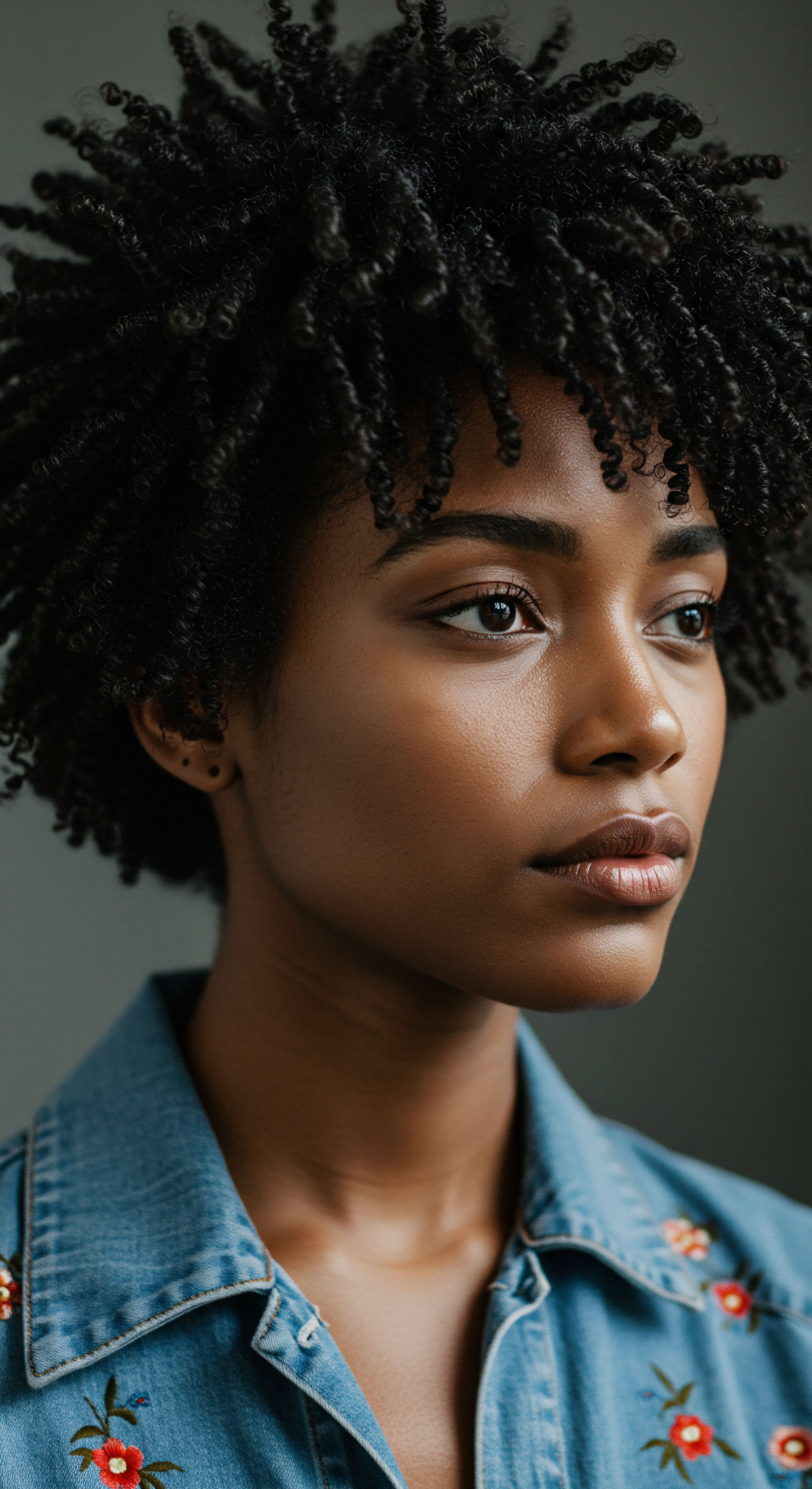
Textured Hair Classification Systems
While various classification systems exist, the focus here is not on rigid categorizations but on appreciating the spectrum of textures within curly and coily hair. These systems, whether numerical or descriptive, help us recognize the diverse curl patterns, from loose waves to tight coils, each with its own specific needs and tendencies regarding moisture absorption and retention. The inherent structure of these patterns influences how products interact with the hair, making a generalized approach to care often insufficient.
- Type 3 Hair ❉ Characterized by distinct curls, ranging from loose loops to tight, springy corkscrews.
- Type 4 Hair ❉ Defined by tight coils, often forming Z-patterns or S-patterns, with significant shrinkage.
- Coil Patterns ❉ The shape of the hair strand, which can be round, oval, or flat, impacts how the cuticle lays.

The Essential Lexicon of Textured Hair
To speak with clarity about textured hair care, a shared vocabulary is helpful. Terms like “porosity,” “moisture,” “protein,” and “humectant” become more than mere words; they are keys to understanding the hair’s language.
Porosity, as we know, refers to the hair’s ability to absorb and retain water and products. It’s not a static condition; while genetics play a role, hair grooming practices, chemical treatments, and environmental factors can significantly alter it. Low Porosity Hair has tightly packed cuticles, making it resistant to moisture absorption, causing products to sit on the surface. High Porosity Hair, conversely, has lifted or compromised cuticles, allowing moisture to enter easily but also escape quickly, leading to dryness and frizz.
Moisture refers to the water content within the hair shaft, vital for elasticity and preventing breakage. Protein treatments help strengthen the hair by filling gaps in the cuticle, particularly beneficial for high porosity hair. Humectants are ingredients that attract and hold moisture from the air, often found in products for drier hair types.

Hair Growth Cycles and Influencing Factors
Hair growth follows a cyclical pattern ❉ anagen (growth), catagen (transition), and telogen (resting). Understanding this cycle helps contextualize hair shedding and overall hair health. Factors such as genetics, nutrition, stress, and hormonal balance all play a part in influencing these cycles.
For textured hair, specific practices can also impact growth and retention. For instance, prolonged mechanical stress from tight hairstyles or chemical treatments can lead to hair loss, including conditions like traction alopecia.
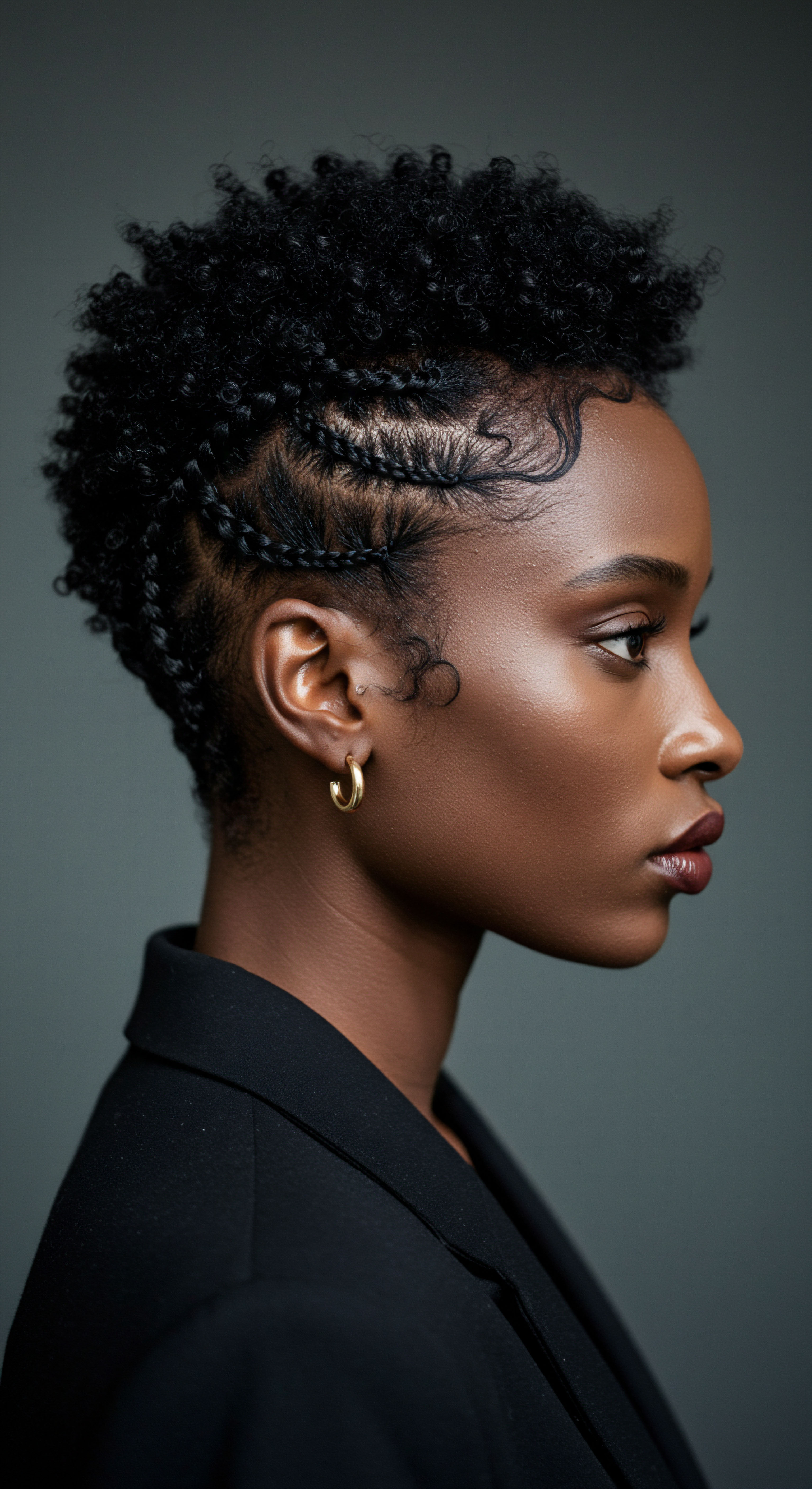
Ritual
Stepping into the daily rhythms of hair care, we recognize that our routines are more than simple tasks; they are intimate rituals, moments of connection with our strands. Yet, what happens when these deeply ingrained practices, intended to nourish and protect, become misaligned with the very nature of our hair? When the products we reach for, the techniques we employ, do not speak the same language as our hair’s porosity? This section seeks to offer guidance, exploring the applied wisdom of care with a gentle hand, unraveling the nuances of how our actions shape the long-term vitality of our hair.
The daily and weekly choices we make for our hair profoundly influence its health. When these choices clash with the hair’s porosity, the consequences, while subtle at first, accumulate over time, leading to persistent challenges.

Protective Styling Encyclopedia
Protective styles, such as braids, twists, and weaves, are often embraced for their ability to minimize manipulation and encourage length retention. However, the effectiveness of these styles hinges on proper execution and understanding of porosity. For instance, if high porosity hair is tucked away in a protective style without adequate moisture retention strategies, it can become excessively dry and brittle underneath, leading to breakage upon unraveling. Conversely, low porosity hair might experience product buildup and scalp irritation if heavy butters and oils are applied too frequently without proper cleansing.
It is worth noting that while widely regarded as protective, certain braiding practices can, in fact, cause damage. Research indicates that the act of twisting hair, as in braiding, can reduce its fatigue strength. This highlights the need for careful technique and a balance between protection and potential stress on the hair fiber.
Our daily hair care rituals, when mismatched with porosity, can subtly undermine hair health, making persistent challenges.

Natural Styling and Definition Techniques
Achieving definition in natural textured hair often involves specific product choices and application methods. For low porosity hair, lightweight, water-based products that easily penetrate the cuticle are preferred. Heavy creams and oils tend to sit on the surface, causing a greasy feel and buildup, rather than providing hydration. For high porosity hair, thicker creams, butters, and oils are often necessary to seal in moisture, as the open cuticles allow water to escape quickly.
Consider the simple act of detangling. For high porosity hair, which can be prone to tangles and breakage due to lifted cuticles, detangling while wet and saturated with conditioner is often gentler. For low porosity hair, which resists water absorption, ensuring the hair is thoroughly damp and using a slippery conditioner can ease the process without causing undue friction.

Wigs and Hair Extensions Mastery
Wigs and extensions can offer versatile styling options and a respite from daily manipulation. However, the hair underneath still requires meticulous care, especially when porosity is a factor. If the natural hair is braided too tightly underneath a wig or weave, it can cause traction alopecia, a form of hair loss.
Furthermore, ensuring the hair is cleansed and moisturized appropriately while in these styles is vital. Satin wig caps, for instance, are preferable over cotton or nylon as satin absorbs less moisture from the hair, reducing dryness and friction.
| Porosity Type Low Porosity |
| Cuticle Behavior Tightly closed, resistant to opening |
| Product Absorption Products sit on surface, slow absorption |
| Porosity Type High Porosity |
| Cuticle Behavior Lifted, open, or compromised |
| Product Absorption Quick absorption, quick moisture loss |
| Porosity Type Medium Porosity |
| Cuticle Behavior Slightly open, balanced absorption |
| Product Absorption Good absorption and retention |
| Porosity Type Understanding cuticle behavior guides effective product choices. |

Heat Styling and Thermal Reconditioning
Heat styling, while offering temporary style transformations, carries inherent risks, particularly for hair with compromised porosity. High porosity hair, already vulnerable due to its lifted cuticles, experiences accelerated damage from heat. The heat can further lift and damage the cuticle, leading to increased frizz, dryness, and breakage. Even low porosity hair, though more resistant to water penetration, can suffer internal damage from excessive heat if not properly protected, as the heat can cause protein degradation within the cortex.
A study investigating the effects of common consumer hair care protocols on textured hair found that multiple cycles of washing, blow-drying with combing, and flat ironing significantly affected hair porosity, leading to structural alterations and negatively impacting thermal and mechanical properties. This research underscores the damaging potential of routine practices when not balanced with protective measures.

The Complete Textured Hair Toolkit
Building a thoughtful hair care toolkit extends beyond just products; it includes tools that support the hair’s structural integrity. Wide-tooth combs, seamless detangling brushes, and satin-lined accessories become allies in minimizing friction and mechanical stress. When selecting tools, consider how they interact with your hair’s porosity. For instance, a steamy environment or a hooded dryer can help open low porosity cuticles to receive deep conditioning treatments, while a cool rinse can help seal high porosity cuticles after conditioning.

Relay
How do the unseen narratives of our heritage and the very science of our strands converge to shape the enduring consequences of mismatched porosity care? This question invites us to a deeper contemplation, a journey beyond the visible, into the intricate interplay of biological realities, cultural practices, and long-term hair health. Here, we peel back layers, allowing profound insights to surface, grounded in research and a respect for the multifaceted experiences of textured hair.
The long-term consequences of mismatched porosity care extend beyond immediate aesthetic concerns, settling into the very structure of the hair and influencing its overall health and resilience. These effects are often compounded by historical and cultural practices, creating a complex web of challenges.

Building Personalized Textured Hair Regimens
A truly effective hair care regimen is not a one-size-fits-all solution; it is a personalized symphony, harmonized with the unique characteristics of one’s hair porosity. For low porosity hair, the long-term impact of using heavy, oil-rich products can be chronic buildup, leading to weighed-down, dull strands that struggle to absorb vital moisture. This can result in persistent dryness beneath a greasy surface, making the hair brittle and prone to breakage over time. The cuticle, constantly smothered, may become even more resistant to opening, creating a cycle of ineffective hydration.
Conversely, for high porosity hair, a lack of adequate sealing products can lead to chronic moisture loss. The hair, while absorbing water quickly, releases it just as rapidly, leaving it perpetually dry, frizzy, and susceptible to environmental damage. Over time, this can result in significant protein loss, increased susceptibility to breakage, and a compromised ability to hold styles. The constant swelling and deswelling from rapid water absorption and loss, known as hygral fatigue, can weaken the hair fiber, leading to cuticle damage.
Personalized hair care regimens, tailored to individual porosity, are essential for avoiding long-term issues like chronic buildup or persistent dryness.

The Nighttime Sanctuary ❉ Essential Sleep Protection and Bonnet Wisdom
The hours of sleep, often overlooked, present a critical window for hair protection and restoration. Mismatched porosity care during this period can silently undermine daytime efforts. For high porosity hair, sleeping without a satin or silk bonnet or pillowcase allows the hair to rub against absorbent fabrics, drawing out precious moisture and exacerbating dryness and frizz. This continuous friction can also lead to mechanical damage, causing further lifting of the cuticle and increased porosity over time.
For low porosity hair, while less prone to moisture loss from friction, the lack of proper protection can still lead to tangles and breakage from movement. Moreover, if heavy products are applied before bed to low porosity hair, and then covered without allowing for proper absorption, it can create an environment for product buildup and scalp irritation, hindering natural sebum distribution.

Ingredient Deep Dives for Textured Hair Needs
The selection of ingredients forms the very foundation of effective porosity care. Understanding how different ingredients interact with hair porosity is paramount for long-term health.
- For Low Porosity Hair ❉ Opt for humectants like glycerin (used judiciously to avoid drawing too much moisture out in very dry climates), aloe vera, and lightweight oils such as grapeseed or jojoba. Avoid heavy butters and protein-rich treatments in excess, as they can cause buildup.
- For High Porosity Hair ❉ Seek out heavier emollients like shea butter, avocado oil, and castor oil to seal in moisture. Proteins, such as hydrolyzed wheat protein or silk amino acids, can temporarily fill cuticle gaps, providing strength and reducing breakage. However, overuse of protein can lead to stiffness.
The concept of hygral fatigue is particularly relevant here. Repeated wetting and drying of hair, especially high porosity hair, causes the hair shaft to swell and contract. This continuous movement can stress the cuticle, leading to cracks and fissures, making the hair even more porous and vulnerable. Rele et al.
demonstrated that coconut oil supports hair moisture retention and fortification by reducing water sorption and hygral fatigue. This suggests the importance of using ingredients that minimize excessive water absorption and promote sustained hydration.
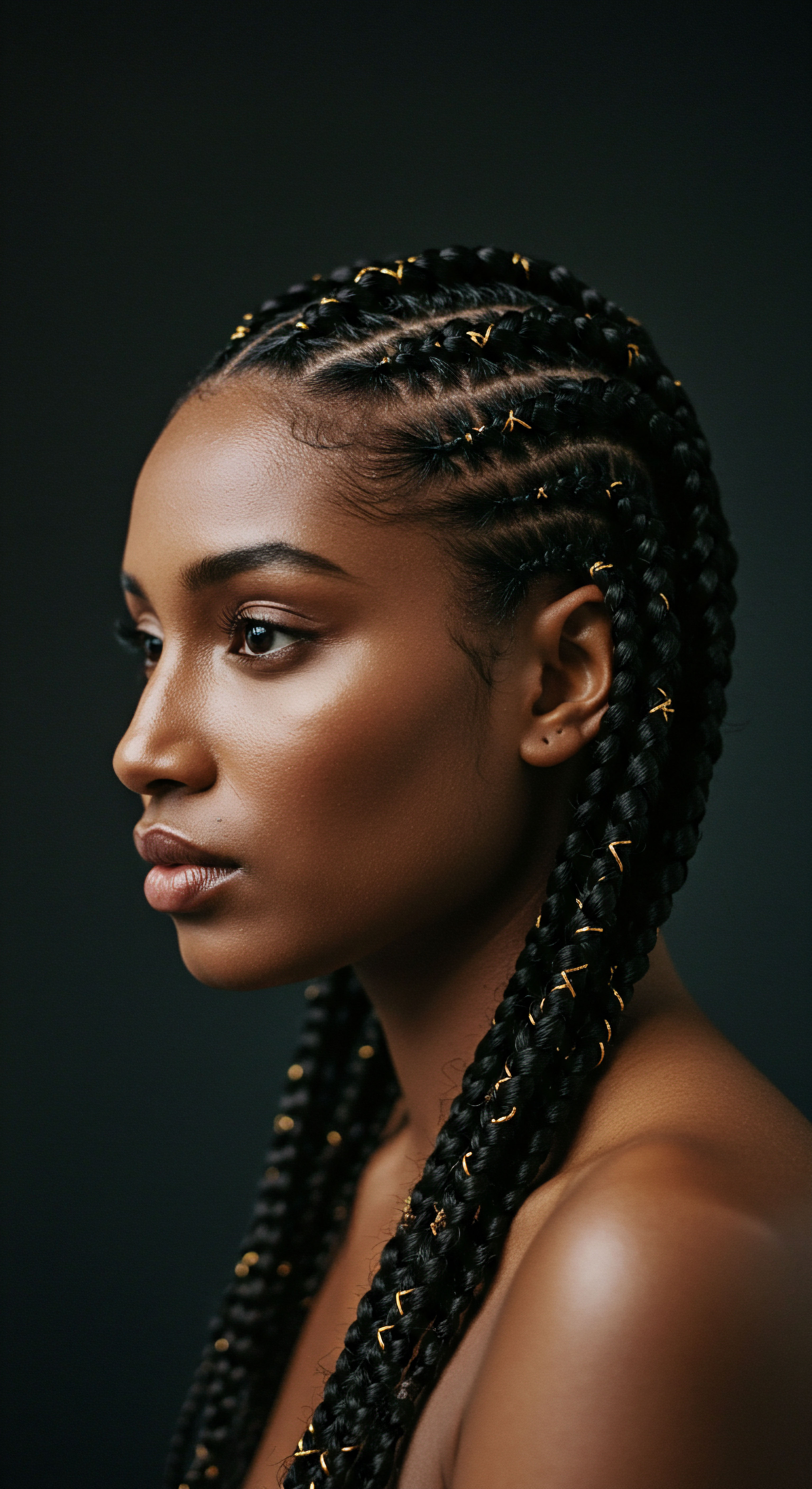
Textured Hair Problem Solving Compendium
When mismatched porosity care persists, a cascade of issues can arise, creating a cycle of damage and frustration.
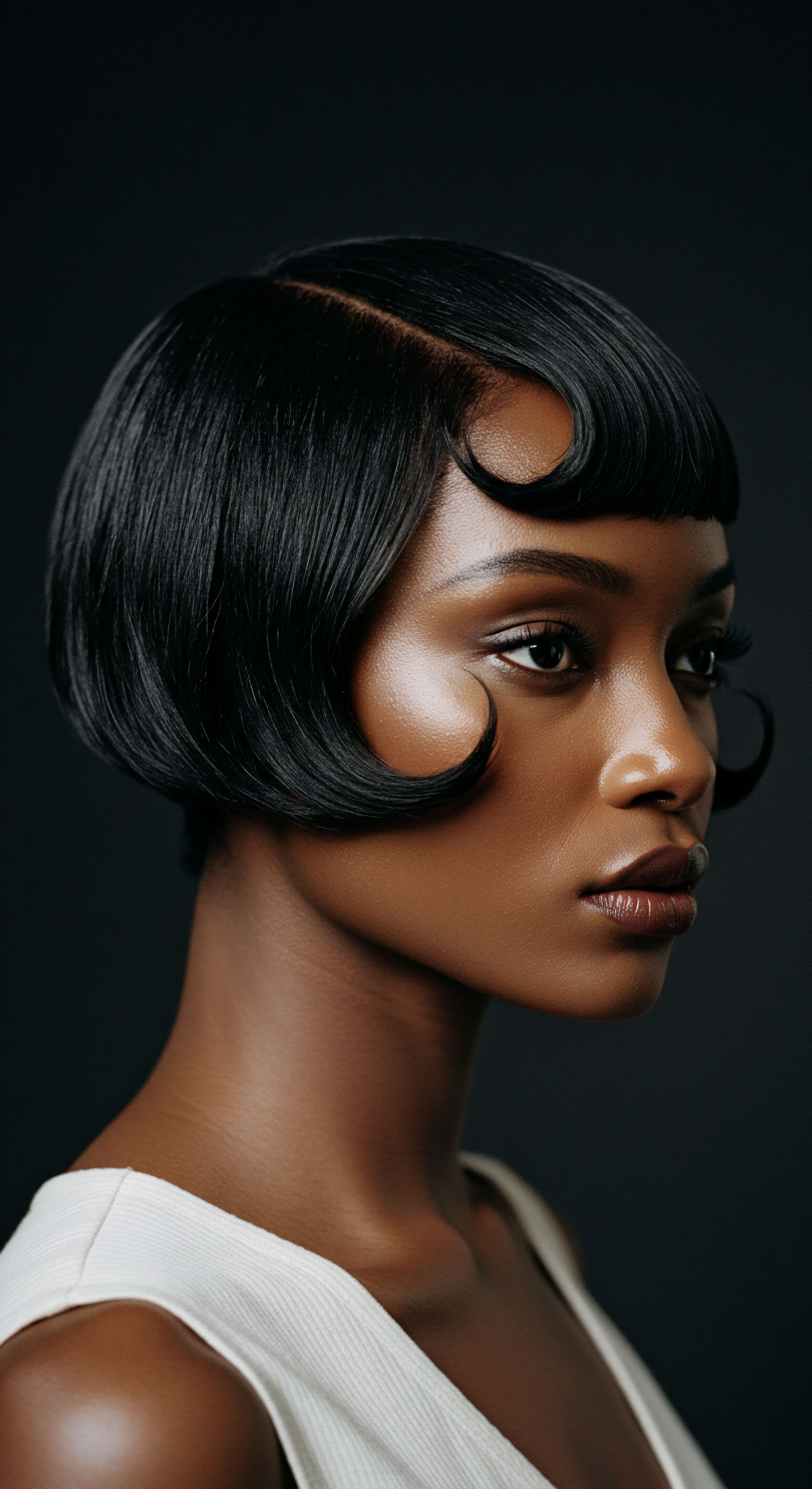
Why Does My Hair Feel Constantly Dry Despite Regular Conditioning?
This is a common lament, often rooted in porosity mismatch. If you have high porosity hair, conditioning alone may not be enough; the moisture quickly evaporates. The problem is not the lack of conditioning, but the inability to retain the moisture.
For low porosity hair, the conditioner may not be penetrating the tightly closed cuticles, simply sitting on the surface and providing no true hydration. The solution lies in addressing the root cause ❉ for high porosity, focus on sealing with heavier products; for low porosity, use heat or steam to aid penetration and opt for lighter formulations.
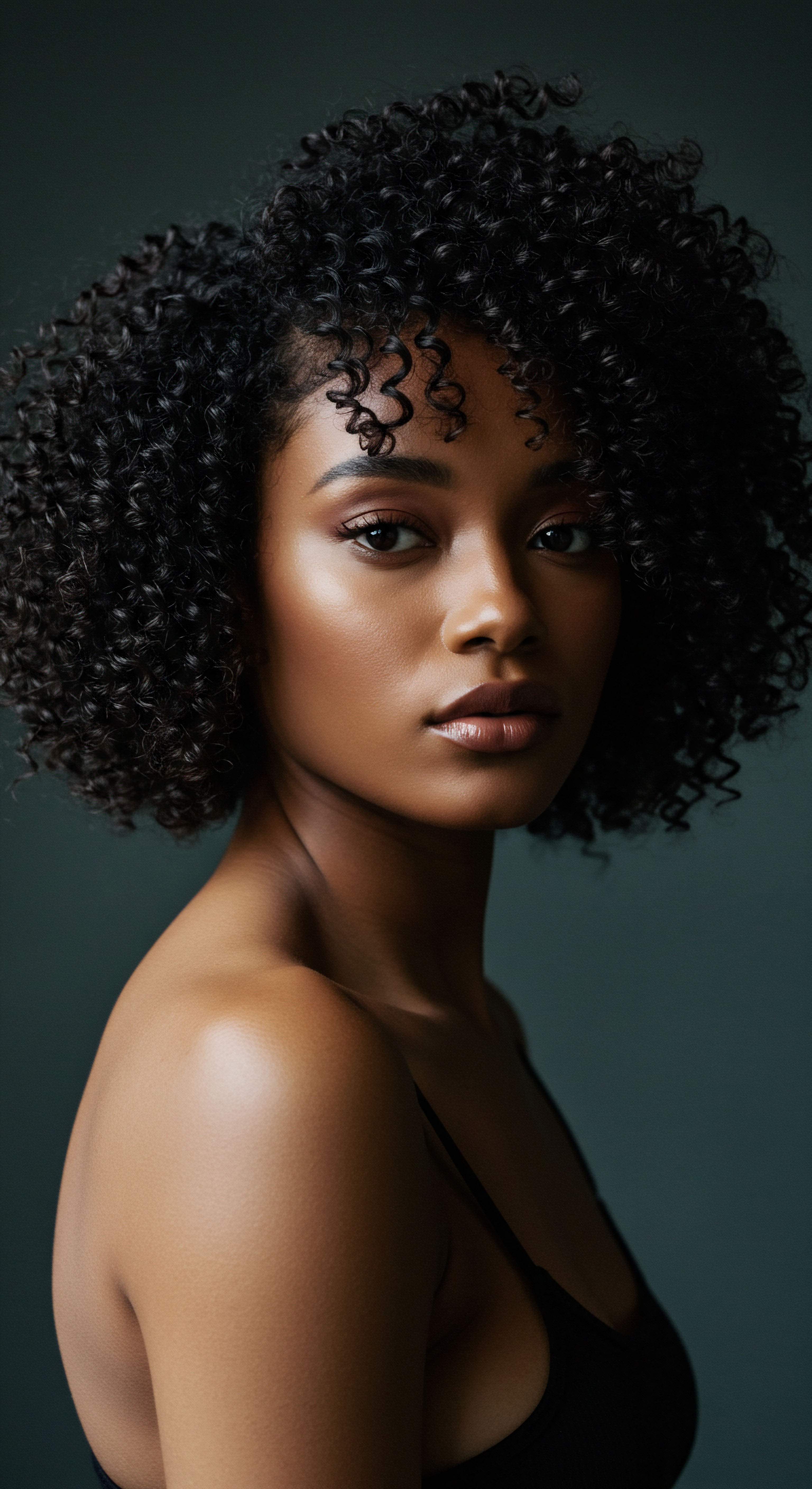
Can Mismatched Porosity Care Lead to Increased Hair Breakage?
Absolutely. Chronic dryness, whether from insufficient sealing in high porosity hair or lack of penetration in low porosity hair, leads to brittle strands. Dry hair lacks elasticity and is far more prone to snapping and splitting.
A study by Mantuan Gasparin and others highlighted that common consumer hair care practices, including heat styling, significantly affected the porosity of textured hair, leading to structural alterations and reduced mechanical properties. This underscores how long-term, improper care can directly compromise the hair’s strength, leading to breakage.
Moreover, chemical treatments like relaxers, frequently used in textured hair care, can cause structural damage, such as increased porosity and a reduction in hair strength. One study found that the application of chemical straighteners can lead to these effects. This chemical alteration of the hair’s structure makes porosity management even more complex and critical.

Holistic Influences on Hair Health
The health of our hair is not isolated; it is deeply interconnected with our overall well-being. Nutrition, hydration, stress levels, and even scalp health play significant roles. A diet lacking in essential vitamins and minerals can weaken hair from within, making it more susceptible to the consequences of mismatched porosity care.
Chronic stress can impact hair growth cycles, leading to thinning or shedding. A healthy scalp provides the foundation for healthy hair growth, and scalp issues, often exacerbated by product buildup from mismatched porosity care, can impede hair vitality.
For instance, a significant number of African American women report excessive hair loss, and a considerable percentage cite hair styling and hair care concerns as impediments to physical activity. This highlights a broader societal and health context where hair care practices, including those influenced by porosity, intersect with well-being and lifestyle choices.

Reflection
As we close this conversation on the intricate dance of hair porosity and its lasting repercussions, we are left with a gentle understanding ❉ our hair, in all its diverse glory, speaks a language of needs. When we listen with intention, when we learn its unique rhythm of absorption and retention, we move beyond mere maintenance into a space of true partnership. The journey of textured hair care is not about rigid rules, but about developing a discerning touch, a knowing eye, and a deep respect for the strands that tell our stories. It is in this mindful approach that we cultivate not just healthy hair, but a deeper connection to ourselves.

References
- Rele, S. & Mohile, R. (2020). An Overview on Hair Porosity. NYSCC.
- Mantuan Gasparin, R. et al. (2025). Porosity and Resistance of Textured Hair ❉ Assessing Chemical and Physical Damage Under Consumer-Relevant Conditions. MDPI.
- Draelos, Z. D. (2010). Hair Cosmetics. CRC Press.
- Robbins, C. R. (2012). Chemical and Physical Behavior of Human Hair. Springer.
- Sewraj, P. (2020). Hot Topics in Textured Hair Research ❉ Hair Porosity and Hair Braiding Damage. TRI/ITC Multi-Ethnic Hair and Scalp Care Symposium.
- Oladele, D. Markiewicz, E. & Idowu, O. C. (2024). The Genomic Variation in Textured Hair ❉ Implications in Developing a Holistic Hair Care Routine. Preprints.org.
- Pereira, A. D. C. et al. (2020). Effects of Chemical Straighteners on the Hair Shaft and Scalp. Surgical & Cosmetic Dermatology.
- Alexis, A. F. et al. (2014). Hair Care Practices and Perceptions in African American Women. Journal of Clinical and Aesthetic Dermatology.
- Khumalo, N. P. et al. (2007). Hair Relaxers ❉ A Clinical and Histological Study. International Journal of Dermatology.
- Aguh, C. & Maibach, H. (2019). Hair Loss in Women of Color ❉ Medical and Surgical Approaches. Springer.